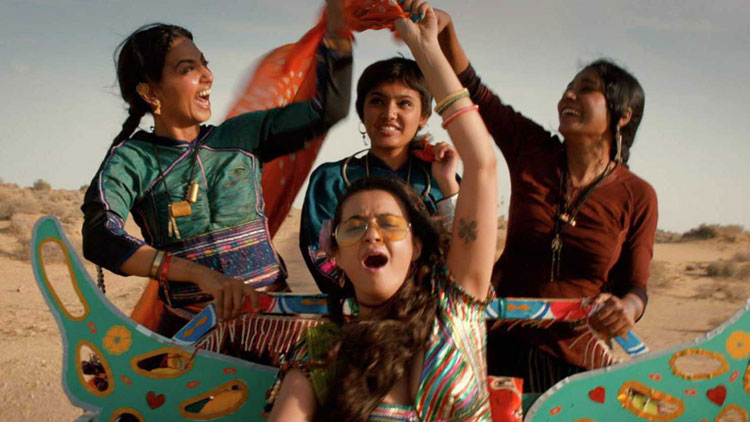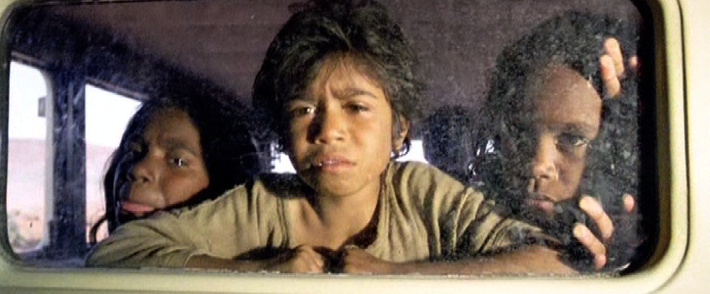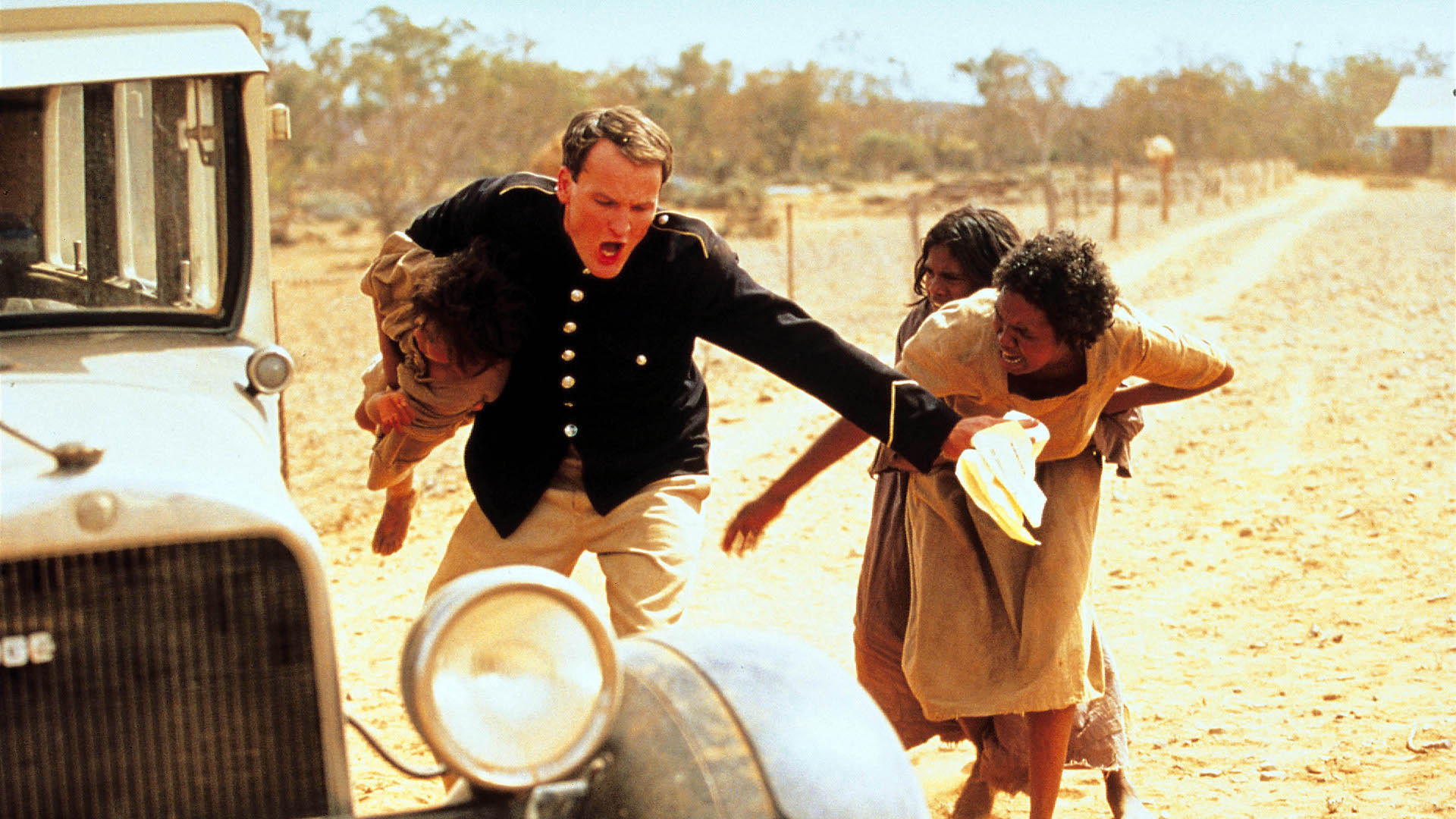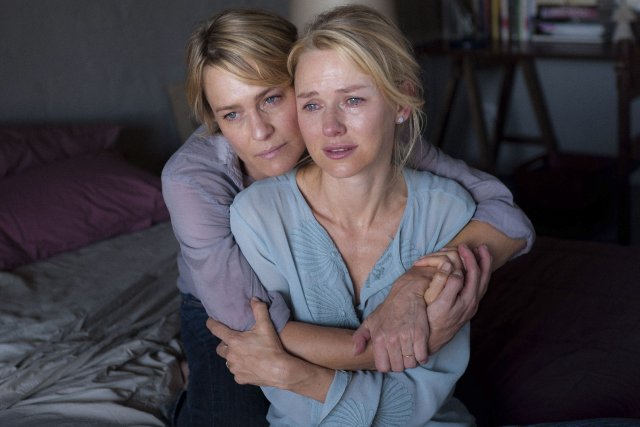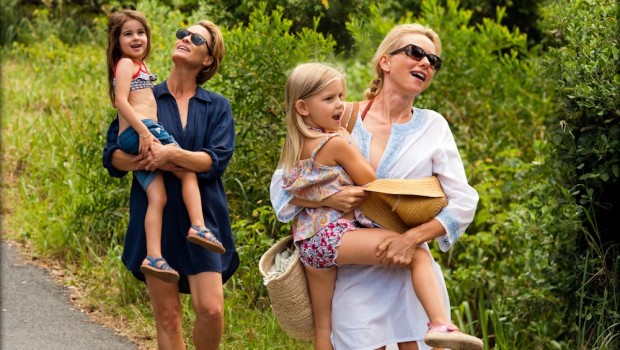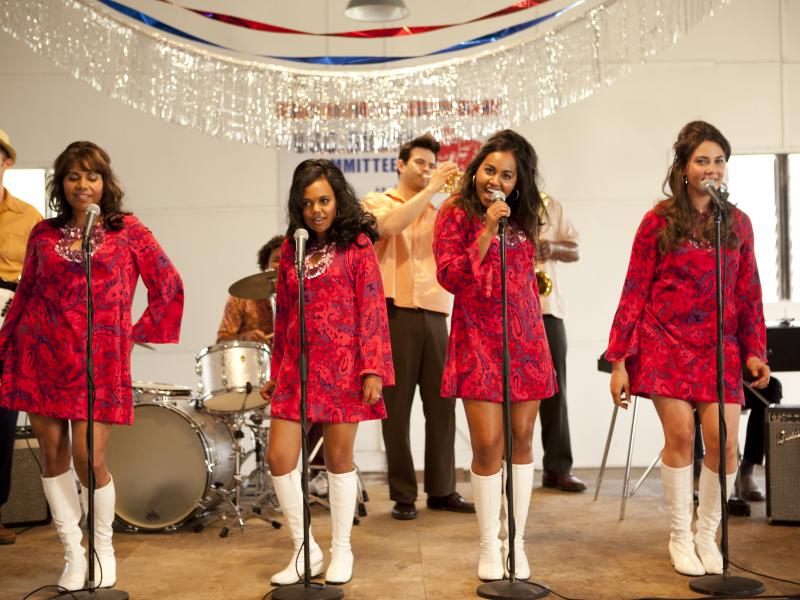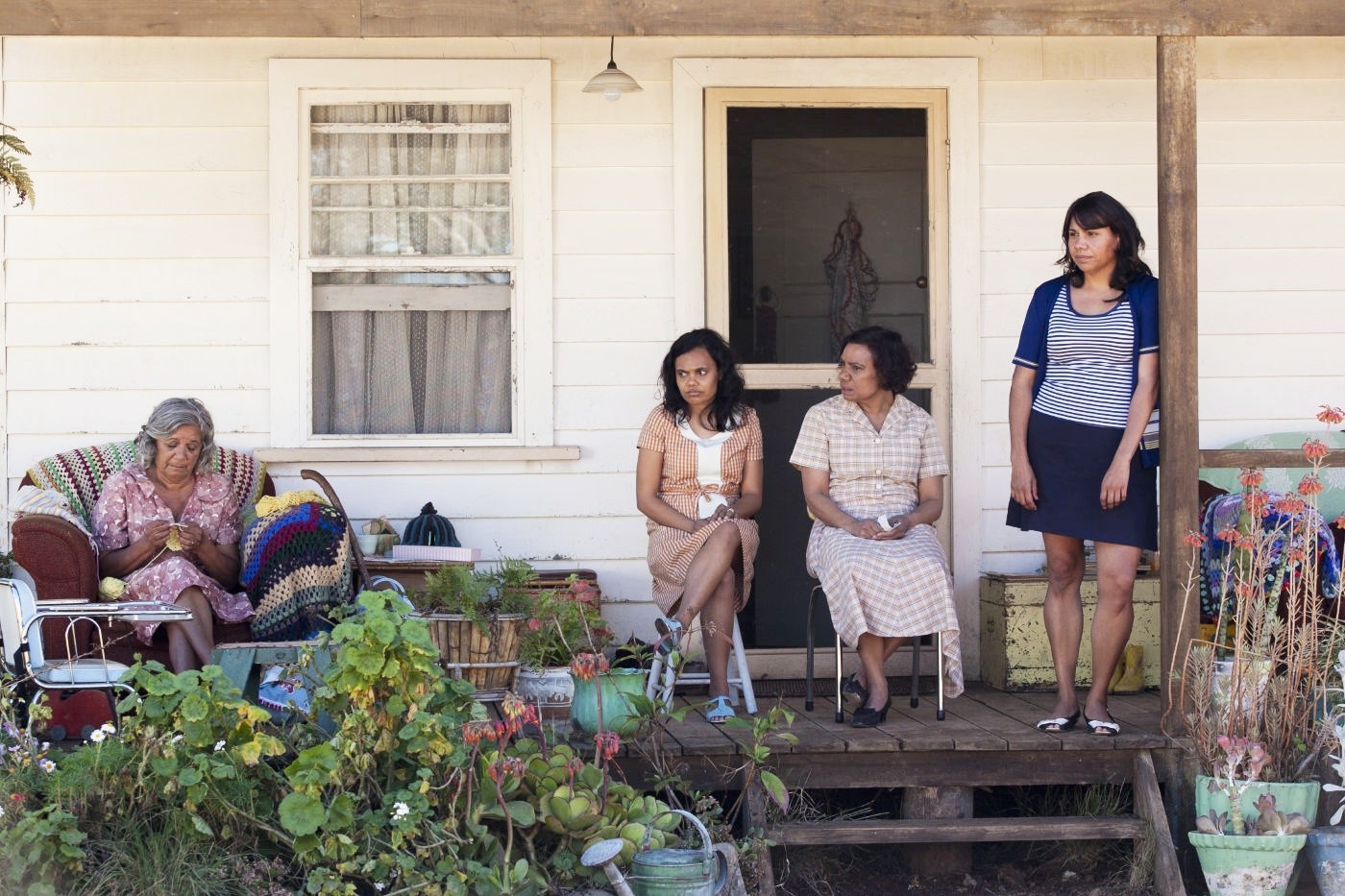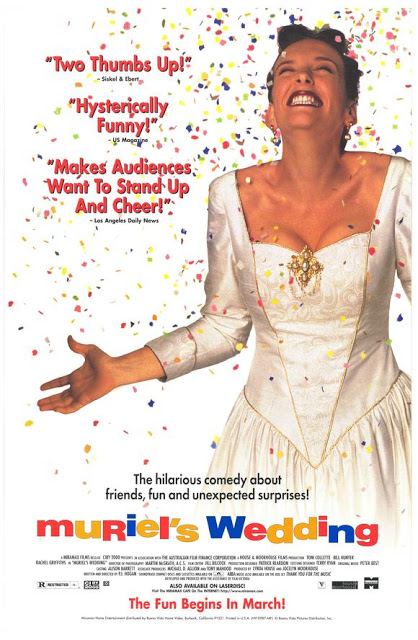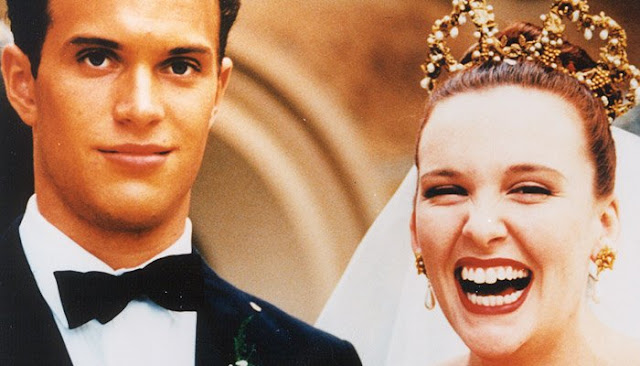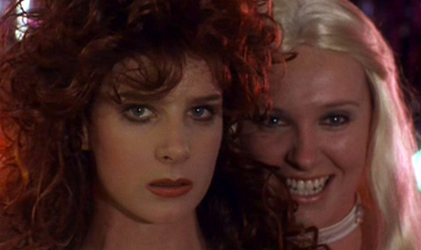The theme at this year’s Indian Film Festival of Melbourne (IFFM) is “women’s empowerment.” In honor of that theme, there will be many narrative, documentary, and short films screening directed by women filmmakers, including Deepa Mehta (Beeba Boys), Leena Yadav (Parched), Rokhsareh Ghaem Maghami (Sonita), and Oscar-winner Sharmaan Obaid-Chinoy (Saving Face).
IFFM is also hosting panels with directors (Leena Yadav), actors (Sara Haider), producers (Sue Maslin, Jenni Tosi), film critics, and more that will discuss how film can spur social change and how sexism impacts women in the film industry. There will be a conversation with Bollywood actress Richa Chadha where she will share her personal experiences and talk about feminism, body positivity, and the “pressures and expectations” women face in the film industry.
If you will be in the Melbourne, Australia area, here are all of the women-directed films and women in film panels you should check out at the 2016 Indian Film Festival of Melbourne, which runs from August 11 through August 21.
Parched
Director: Leena Yadav
August 11, 7:30pm | HOYTS Melbourne Central
“An exciting contemporary melodrama, Parched is set in an isolated North-Indian village where long-uphold customs are slowly changing.
“The widowed Rani seeks a bride for her young son, adhering to societal norms and expectations surrounding traditional arranged marriage. Rani and her friends, the spirited Lajjo, and exotic dancer Bijli, begin to yearn for more than what life has given them; setting in motion a series of events with the potential to change each women’s circumstances. Vibrant, colorful and sensual, and shot by Titanic cinematographer, Russell Carpenter, Parched presents a sharp portrait of gender inequality, and a stirring portrait of liberation.”
A Journey of a Thousand Miles: Peacekeepers
Directors: Geeta Gandbhir and Sharmeen Obaid-Chinoy
August 12, 9pm | HOYTS Melbourne Central
“Shattering stereotypes, Journey of a Thousand Miles: Peacekeepers is a stirring documentary that presents a bold viewpoint of women uniting for a global cause. Directed by two-time Oscar winner, Sharmeen Obaid-Chinoy, the film follows a group of Bangladeshi policewomen who join a UN peacekeeping mission to Haiti, and allows us an immersion into the lives of modern Muslim women, who are so often depicted negatively in the media. Journey of a Thousand Miles offers a close-up look at the lives of these breadwinners, mothers, soldiers, and follows them throughout their journey to Haiti, and back again to Dkaha, where they face fresh challenges.”
In Conversation with Richa Chadha: Bollywood & Body Positivity
August 13, 5pm | HOYTS Melbourne Central
“Join bold Bollywood actress, Richa Chadha, for a conversation on her experience in the showbiz industry. Known for her unconventional roles and strong feminist ideals, Richa has been an outspoken advocate for greater equality in Bollywood: and embodies a spirit and strength relevant to upcoming generations of aspiring Bollywood actresses.
“‘Eating disorders are the best kept secret of Bollywood.’
“Richa speaks candidly about her experience as an actress in Bollywood: reflecting on the pressures and expectations directed towards women in the industry.”
Art and Realities: Cinema for Social Change
August 14, 11am | HOYTS Melbourne Central
“What role does cinema play in facilitating social change? What impact can cinema, and screen content, have upon the ideas and behaviours of society?
“Join a panel of decision makers, and filmmakers to discuss cinema’s role in affecting change, and influencing, and impacting upon behavior.
“Panelists include: Gurmeet Sran (Director, The Hidden Truth), Tim Watts (Federal Labour MP), Roshan Bhandary (Program Manager, InTouch), Cynthia Karena (Journalist and Film Critic) and Srijit Mukherji (Director, Rajkahini).”
Wild Women in Cinema
August 14, 12:30pm | HOYTS Melbourne Central
“Busting myths: FEMINISM is not a radical word.
“In the wake of Screen Australia’s ‘Gender Matters’ funding, designed to offer greater funding opportunities to women in the film industry, what does the future hold for women in film? How does the industry need to adapt and change to best exemplify an equality of the sexes?
“Join IFFM for a discussion on the female in the film industry, as women from both sides of the camera discuss opportunities in the Australian and Indian film industries. How does sexism affect women in the industry? How can we combat this, and create a positive change and positive action?
“Hosted by Rajeev Masand (Entertainment Reporter and Film Critic) and with panelists including: Leena Yadav (Director, Parched), Jenni Tosi (CEO, Film Victoria), Sara Haider (Singer and Actress), Michelle Gater (GM of Programming and Content HOYTS Entertainment) and Sue Maslin (Producer, The Dressmaker).”
Sonita
Director: Rokhsareh Ghaem Maghami
August 14, 12:45pm | HOYTS Melbourne Central
“Winner of the Grand Jury Prize (World Cinema – Documentary) and Audience Award at Sundance, Sonita is an exhilarating and memorable film about the eponymous Afghani refugee. Living in Tehran with her sister and niece, the fiery Sonita dreams of becoming a star, but her mother, and the Iranian regime, have other ideas. Provocative and inspiring, Sonita is a lingering film that challenges the definition of what documentary film is or should be.”
Under Construction
Director: Rubaiyat Hossain
August 14, 1:45pm | HOYTS Melbourne Central
“Struggling to find herself in the chaotic sprawl of Bangladesh, Roya is an actress struggling to thrive in an industry preoccupied with age and beauty. Striving for recognition, Roya is axed from her reoccurring role for being too old, and is urged by her husband to retire to a position of motherhood. Afforded an opportunity to leave the confines of her old life, Roya embarks on a journey of identity and freedom. With a strong female cast and powerful feminist message, Under Construction reflects a wave of exciting female content emerging from the subcontinent.”
Waiting
Director: Anu Menon
August 14, 6:30pm | HOYTS Highpoint
August 16, 7pm | HOYTS Melbourne Central
“A warm and thought-provoking drama, Waiting contemplates life, love and loss… all in the confines of a hospital waiting room. Starring Naseeruddin Shah and Kalki Koechlin as the waiting partners of comatose patients, Waiting is a study of friendship, and individual grief; and allows a contemplation of universal human circumstance.”
Girl in the River: The Price of Forgiveness
Director: Sharmeet Obaid-Chinoy | Academy Award Winner for Best Documentary Short
August 19, 7pm | HOYTS Highpoint
August 21, 2:30pm | HOYTS Melbourne Central
“Winner of the Academy Award for Best Short Documentary, A Girl in the River is an urgent and powerful documentary that examines honour killings in Pakistan.
“Each year, over 1000 girls and women are victims of honour killings; and director Sharmeen Obaid-Chinoy explores the simmering tensions between modernity and tradition in modern day Pakistan. The film follows Saba, a young Pakistani woman, and survivor of an attempted-honour kill perpetrated by her family. Saba fights for her life, her personal dignity and for justice, for an entire generation of women.”
Saving Face
Director: Sharmaan Obaid-Chinoy | Academy Award Winner for Best Documentary Short
August 19, 7pm | HOYTS Highpoint
August 21, 2:30pm | HOYTS Melbourne Central
“Sharmaan Obaid-Chinoy won the first Oscar for Pakistan with this powerful, and lingering, documentary about violence against women.
“Shedding light on the brutal, and underreported, crime of acid attacks, most commonly perpetrated against women; Saving Face follows the lives of two women as they fight for justice, and strive to move on with their lives. The film follows London-based Pakistani surgeon, Dr Mohammad Jawad, as he travels back to his home country to offer free reconstructive surgery to those afflicted by acid violence. Focusing on the courage of the victims and the strength of those who help them, Saving Face considers the social issues inherent within Pakistan, and offers some hope for the future.”
Beeba Boys
Director: Deepa Mehta
August 20, 6pm | HOYTS Melbourne Central
“Award-wining director, Deepa Mehta (Midnight’s Children, Elements trilogy), writes and directs this crime thriller that explores the shadowy happenings of the Canadian underworld. Jeet Johar (Randeep Hooda) is a devoted family man, a loving son, a proud and observant Sikh, and, also, a tough gangster who fronts a gang of charismatic, unyielding youth, the Beeba Boys. Based on the true story of notorious crime lord ‘Bindy’ Singh Johal, Beeba Boys is a provocative and exciting thriller that allows us an immersion into a dark and illicit world. With a strong theme of family running throughout the film, Beeba Boys offers an exciting story of violence, discrimination and social issues.”
For the Love of a Man
Director: Rinku Kalsy
August 20, 6:45pm | HOYTS Highpoint
“The madness of South Indian fandom makes for entertaining and compelling viewing in this colorful documentary. Former bus driver, Rajinikanth, now a living legend, is literally worshiped as deity by Tamil Nadu’s impoverished masses. Profiling the lives of fans and their families, the audience is privy to a mimicry and adoration unique to Indian film culture. Jaw-dropping and shocking, For the Love of a Man celebrates the distinctive enthusiasm of Indian cinema fans.”
K2 and the Invisible Footmen
Director: Iara Lee
August 21, 4:30pm | HOYTS Highpoint
“Welcome to K2: the 2nd highest mountain peak in the world. The road to the top is often treacherous and unforgiving, and the conditions wild and unpredictable. Indigenous porters guide the road to the peak, carrying provisions for foreign climbing companies and enduring harrowing conditions. Without proper equipment, the porters support foreign climbers to the peak of the ‘Savage Mountain’, saving the minimal wages to support their families. This cinematic documentary explores the courage and sacrifice of the indigenous porters who guard the sacred peak, and, like Jennifer Peedom’s Sherpa, urges us to consider the lives of the true heroes of the world’s tallest mountains.”
The New Girl in Class
Director: Amrita Dasgupta
August 21, 6pm | HOYTS Highpoint
“A moving and powerful documentary, The New Girl in Class explores the possibility of mainstream education for children with autism. Neeraja is a dedicated and resilient mother, and has struggled for years to enroll her daughter in conventional schooling. Uplifting, personal and challenging; The New Girl in Class immerses us in the challenges and triumphs experienced by mothers around the world.”
Spice Sisters
Director: Sheila Jaydev
August 21, 6pm | HOYTS Highpoint
“Rohini, a former Bollywood star, is bored with her life in suburbia. When a popular reality show announces a call for contestants, she leaps at the opportunity to make a change. Spice Sisters is poignant comedy about family and friendship, and having the courage to make a change.”
Playgrounds
Directors: Shamik Sen Gupta and M.D. Pallavi
August 21, 6pm | HOYTS Highpoint
“After a long shift, a rickshaw driver is shocked to discover a young boy asleep in the back seat of his auto. The two struggle to communicate, but venture on a journey to return the boy to his family. Set across two working-class neighborhoods, Playgrounds examines the harsh realities of India’s urban sprawls.”
Posters and descriptions of films and panels courtesy of Indian Film Festival of Melbourne
